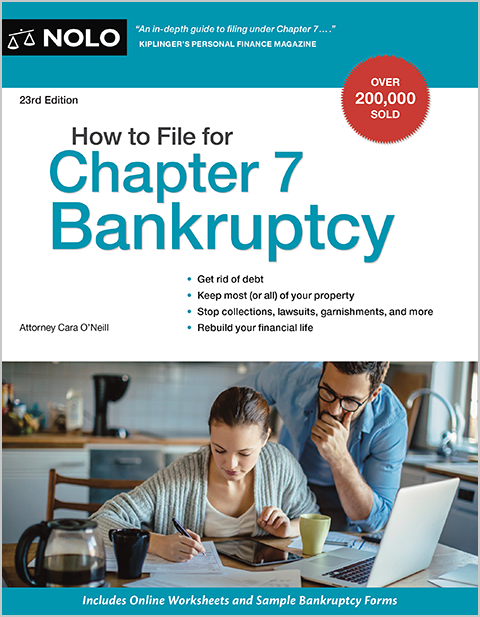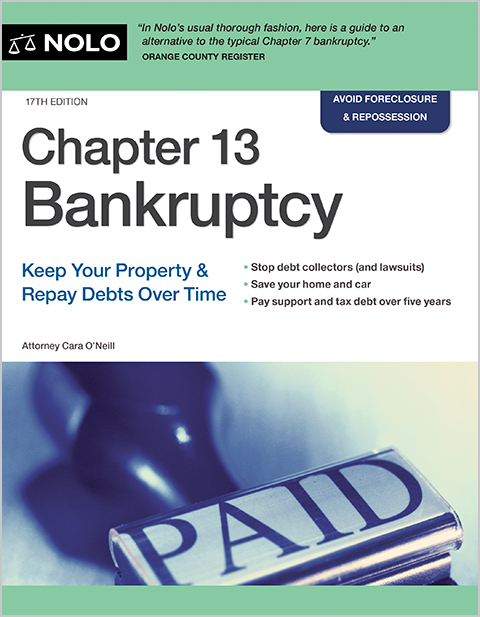 Completing the Bankruptcy Forms
Completing the Bankruptcy Forms
When you file for Chapter 7 or Chapter 13 bankruptcy, you must complete a large packet of forms. These "official bankruptcy forms" consist of:
- the bankruptcy petition, which provides information about you and your case
- a series of schedules, which gives the court a picture of your financial situation, and
- various other forms.
You file many of the same forms for both Chapter 7 and Chapter 13 bankruptcy, with a few exceptions.
You'll need to know where to find the forms, what type of information they require, and general instructions on how to complete them.
When filing for bankruptcy, you'll disclose your income, debts, property, and transactions on a bankruptcy petition and schedules. You'll list all of your property on Schedule A/B of the bankruptcy forms.
On Schedule C of the bankruptcy petition, you list all of the property you claim is exempt. A filer can protect exempt property listed on Schedule C in bankruptcy.
On Schedule E/F of the bankruptcy petition, you list all unsecured claims. Learn more.
When you file for bankruptcy, you must list your legal interest in your real estate, including the type of property ownership. Here are some of the common types of property ownership.
If you are filing for bankruptcy without your spouse and living separately, the marital adjustment deduction could help you qualify for Chapter 7 bankruptcy. Learn how completing Chapter 7's declaration of separate households can help you pass the means test.
On the Statement of Intention for Individuals Filing Under Chapter 7 (Form 108), you tell the bankruptcy trustee and secured creditors what you intend to do with secured property and unexpired leases.
When you file for bankruptcy, you must list all of your creditors and their addresses on the creditor mailing list or mailing matrix. This notifies them of the bankruptcy and automatic stay.
Learn about the consequences of failing to list a creditor on your bankruptcy creditor mailing list and what to do to fix it.
If you cannot afford to pay the $335 filing fee in full or in installments, you can file an Application to Have the Chapter 7 Filing Fee Waived (Form 103B).
Amending a bankruptcy form is usually an easy process. Here's how to do it.
Empower Yourself: DIY Products by Nolo
Sidestep the lawyers with do-it-yourself books, documents, and software.
Nolo offers hundreds of consumer-friendly, do-it-yourself legal products for all types of legal situations. Browse our full product list.
More Legal Issues
Click below to view more legal issues. Our extensive collection of legal topics ranges across different areas of practice.
Corporations Car Accidents Criminal Law Debt Management Disability Law Divorce & Family Law

Learn About Our Team
Our editors have over 100 years of combined experience practicing law. These professionals have worked in a wide range of legal areas, from estate planning to criminal law to business formation and beyond. They’re experts at explaining complicated legal issues in easy-to-understand terms.
Learn more about the team that manages Nolo’s articles, books, and DIY tools.
Need a Lawyer? We Can Help
Find an experienced, local attorney in three easy steps. Our process is designed for ease and simplicity.
Describe Your Case
Briefly tell us about your case, and provide your contact information.
Get Connected
We find and instantly list attorneys that can best handle your case.
Hire an Attorney
Choose the attorneys you would like to work with.
Nolo Legal Dictionary
Find plain-English definitions for legal terms by browsing Nolo's Law Dictionary.
Are You an Attorney?
Grow your firm with Martindale-Nolo, the largest legal network, and learn more about our attorney lead-generation and marketing services.
Integrity and Expertise You Can Rely On
At Nolo, we prioritize quality and transparency because we know how important reliable legal information is to our readers. Our information is meticulously researched, regularly updated, and written in plain English by our experienced writers and editors. Learn more about our editorial standards.


